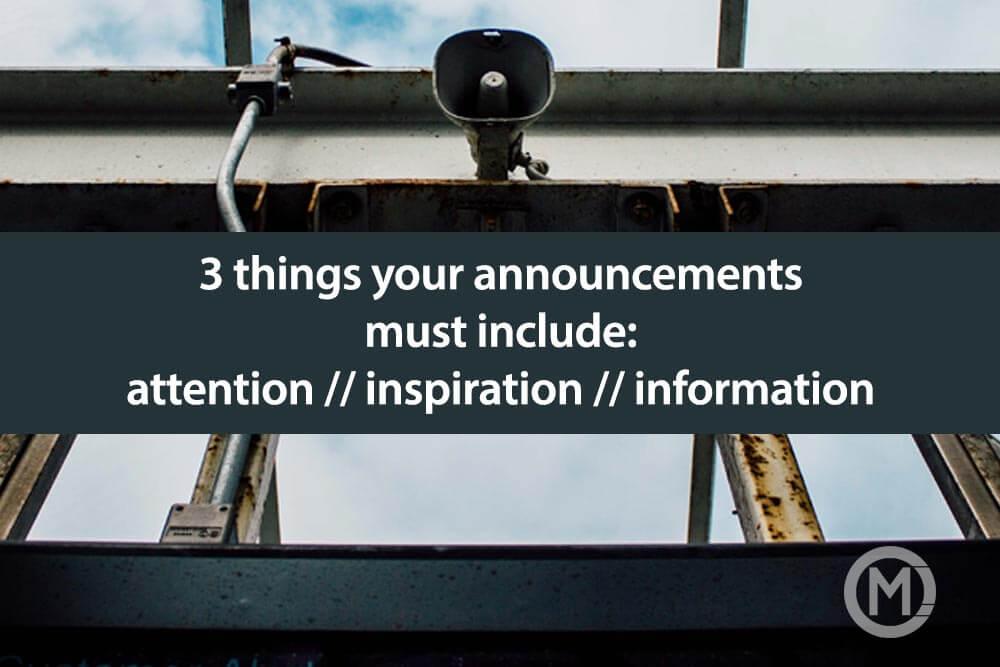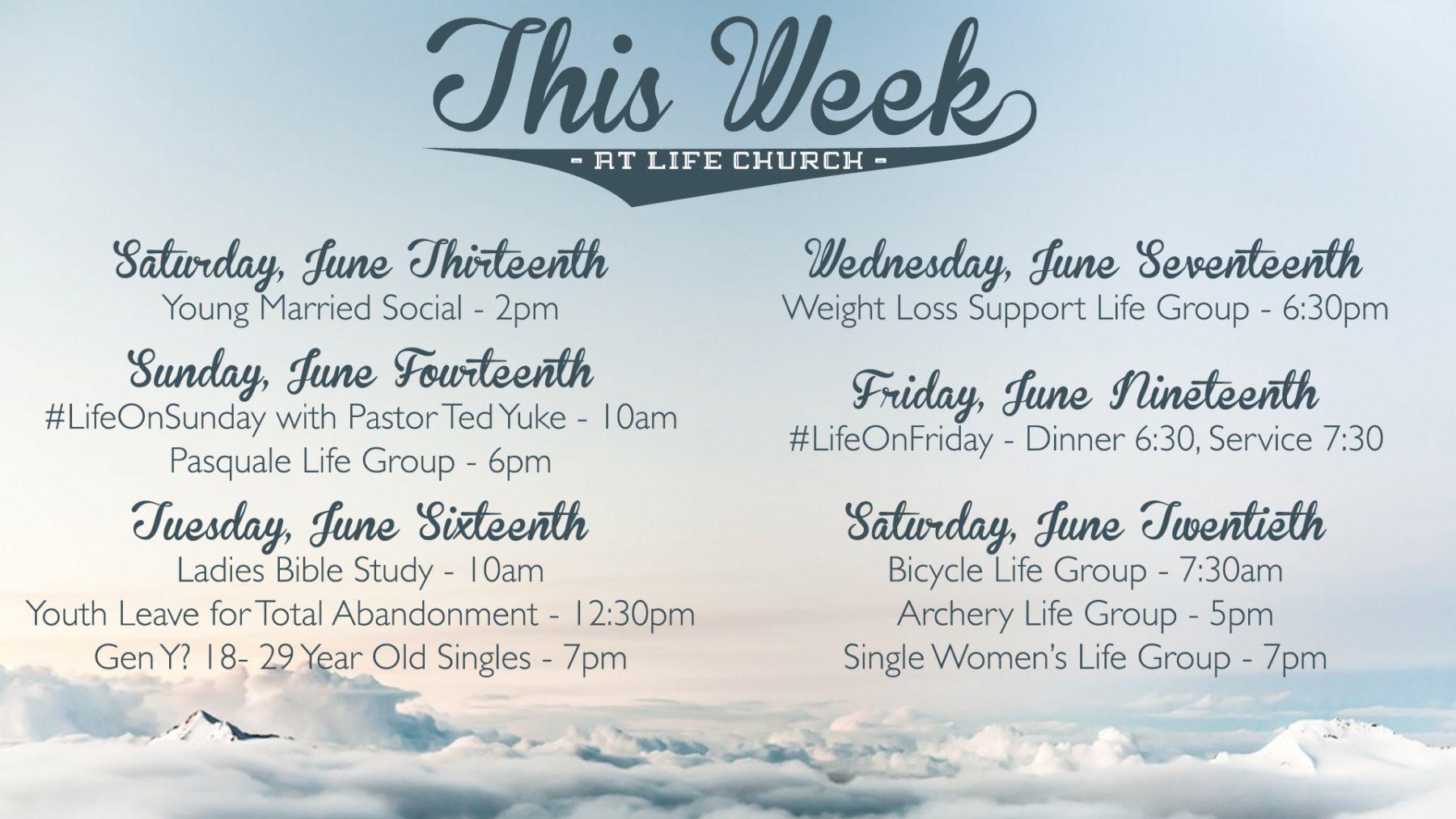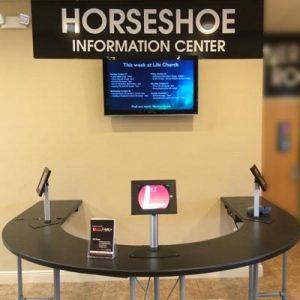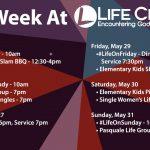Whether live or video, printed or digital, your church’s announcements are asking people to respond in some way, like come to an event, register for something, sign up for a team. In business, this is called a ‘call-to-action.’ and in order for your call-to-action to be successful, it needs to have 3 components, and often in this order:
- Attention
- Inspiration
- Information
I’ll explain each of these 3 items, then below an example of a live announcement I did from this past weekend and how it worked, plus a few things I noticed that I’d like to work on moving forward.
1. Get Your Audience’s Attention
If you have inspiration and information, but you don’t have your audience’s attention, it’s worth nothing. We’ve all had an experience where we had a technical difficulty and a video didn’t play in service. At that point, it doesn’t matter how much inspiration and information is in that video if no one sees it.
How to get your audience’s attention: Ask a question, mention something that everyone is experiencing and tie it to your announcement, or start with an interesting fact.
Keep your audience’s attention by only talking about things that are relevant to them (Here’s how we determine what to include in our announcements).
While you may switch the other 2 around, I would suggest that getting attention needs to be first on the list.
2. Inspire Your Audience
Make them laugh, make them cry, make them feel hopeful or make them experience someone else’s hopelessness. Trigger an emotion that makes them want to respond. This is your WHY. (side note: Here’s an article on communicating your WHY… not just how to respond but WHY.)
3. Give Your Audience Information
This is possibly the easiest piece of the puzzle, but so often done poorly. The 2 extremes are too much information (too much to remember) or too little information (the person is walking away wondering how to respond.)
Find the middle ground, and this takes some practise – enough information to get someone interested, but not more than they need. Then give ONE way to respond. On campus, we’re pointing people to the horseshoe (our Guest info kiosk that because of its location is shaped like a horseshoe) and online, we’re pointing people to our website.
A mistake in the response that I’ve seen is saying “Visit our website example.com/adults/women/prayer” or “Go see John Smith after service to sign up.” (You’re basically saying “If you know who John Smith is, you’re welcome to get involved. If you’re new, we know you don’t know who John Smith is, so we don’t want you to be involved.)
Multiple ways to respond isn’t helpful either. Stop by guest services, or sign up on our website, or join our Facebook group, or call the office this week, or send an email to PastorJohnSmith@example.com… Overload…
Here’s my opening announcement on January 8, 2017 at Life Church in Fort Myers, Florida. I’ve made some notes below.
https://www.youtube.com/watch?v=RkZ_lL6GkBc&feature=youtu.be
1. Attention
I started by talking about the cool breeze this morning. In south west Florida in January, we don’t often have a morning where it’s down to 50 F. People are pulling out warm clothes or jackets that they may only wear a few days each year, so it was a common thread everyone could identify with.
I kept the attention with a couple of jokes that led me to New Years Resolutions.
2. Inspiration
We’ve created a way for you to reach people who may have decided on a new years resolution, and here’s a way the you can connect them to Life Church and God.
3. Information
The business cards are simple for you to carry around and hand out. You can pick them up at the horseshoe in the foyer (our Guest Info kiosk is shaped like a horseshoe).
A few things I would like to work on when I present Live Announcements:
- Our media team expecting whoever is speaking to be standing on the grey carpet you see on our stage (that’s simply an indication of where that first camera shot is positioned.) I need to wait until I’m on that carpet to start speaking. (This is a cut from our Live Broadcast feed, so this is actually what was broadcast online that morning.)
- I walk back a forth more than I’d like to. A little is fine so it feels conversational, but I don’t want it to be distracting for the message.
- I didn’t hit the inspiration part as well as I’d like to. I don’t often script my live announcements, so in this case, I would have like to help create more of a sense that people are looking for the information and our people can help connect them with it.
- I have some verbal static (repeating myself talking about resolutions, I say ‘Actually, Believe it or not, typically, umm, ah…’) Verbal static is when you say words that offer no value to the conversation while you gather your thoughts to say something meaningful. Slowing down a little would allow me to vocalize those thoughts without the static.
If you’re interested, here is my full announcement clip from that Sunday:
https://youtu.be/I5pPqNxz7Xo
Brady Shearer from Pro Church Tools has a great way to integrate stories into your announcements (more than 35% of the time Jesus was teaching, He used stories!) Check out Brady’s 2-part formula here!
I’d love to hear your thoughts, or if you have a clip of your live announcements, post it in the comments!



 We also have 4 LCDs in the foyer. 2 that duplicate the countdown happening in the auditorium, 1 that’s designated for kids check in, and 1 that’s designated for our Horseshoe information center (we call it the horseshoe because… well, it’s shaped like a horseshoe. Also, during service, when we say “Sign Up At The Horseshoe in the foyer,” just about every new visitor can figure out where that is any why it’s called that.)
We also have 4 LCDs in the foyer. 2 that duplicate the countdown happening in the auditorium, 1 that’s designated for kids check in, and 1 that’s designated for our Horseshoe information center (we call it the horseshoe because… well, it’s shaped like a horseshoe. Also, during service, when we say “Sign Up At The Horseshoe in the foyer,” just about every new visitor can figure out where that is any why it’s called that.)




